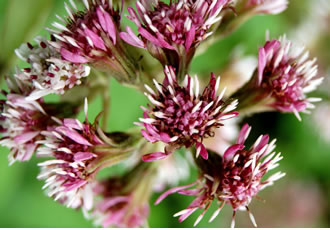
Butterbur, Blatterdock, Bog Rhubarb, Bogshorns, Butter-Dock, Butterfly Dock, Capdockin, Exwort, Flapperdock, Japonica Petasites, Langwort, Pestwurz, Petasites,,Petasitidis Rhizoma, Petasitidis Tussilago hybrida, Umbrella Leavesfuki, Blatterdock , Horsehoof, Donnhove, Coughwort, butter-dock , butterfly dock , coltsfoot , exwort , pestilence-wort , pestwurz (German), Petadolex , Petaforce , Tesalin
Butterbur (Petasites hybridus) is a perennial shrub native to Europe and cultivated throughout North and West Asia. Butterbur can grow up to 3 feet in height with very large and heart-shaped downy leaves. Butterbur leaves are rough toothed and their underside are white. Butterbur prefer moist environments and are commonly found in damp, wet or marshy areas. Butterbur bears pink-lilac flowers that grow on large spikes at the stem ends. Butterbur roots are long and thick that spreads under the ground.
Butterbur has long been used as traditional herbal remedy for coughs, respiratory problems. gastric ulcer and bee stings.
Butterbur has been reported to have positive effect against migraine. Butterbur contains petasin and isopetasin that according to studies can reduce the pain associated with severe migraine attacks even for children.
In a Swiss funded study, Butterbur has been found to be an effective treatment for hay fever without the sedative effects of antihistamines.
Butterbur is generally used a health tonic to strengthen the heart and kidneys. Other traditional medical uses of Butterbur include treatment of fever, urinary tract disorders, spasms, asthma, cough, gastrointestinal problems, cramping and headache.
Other folkloric application is in the treatment of depression, obesity, gastrointestinal parasitic infestation, sores, plague and even cancer.
Although Butterbur are used for these illnesses, limited scientific study has been done to confirm them.
This study evaluated clinical efficacy of a standardized special root extract from the plant Petasites hybridus as a preventive therapy for migraine. This is a three-arm, parallel-group, randomized trial comparing Petasites extract 75 mg bid, Petasites extract 50 mg bid, or placebo bid in 245 patients with migraine. Eligible patients met International Headache Society criteria for migraine, were ages 18 to 65, and had at least two to six attacks per month over the preceding 3 months. Over 4 months of treatment, in the per-protocol analysis, migraine attack frequency was reduced by 48% for Petasites extract 75 mg bid (p = 0.0012 vs placebo), The most frequently reported adverse reactions considered possibly related to treatment were mild gastrointestinal events, predominantly burping. Petasites extract 75 mg bid is more effective than placebo and is well tolerated as a preventive therapy for migraine. Petasites 50 mg PO bid was not significantly more effective than placebo on the primary study endpoints. Source: Neurology. 2004 Dec 28;63(12):2240-4.
The efficacy and tolerability of a butterbur root extract (Petadolex) for the treatment of asthma was analyzed in a prospective, non-randomized, open trial. Subjects included 64 adults and 16 children/adolescents treated for two months with the extract, followed by two months during which the intake of the extract was optional. Concomitant asthma medication was permitted. The number, duration, and severity of asthma attacks decreased, while peak flow, forced expiratory volume (FEV1), and all measured symptoms improved during therapy. In addition, more than 40 percent of patients using asthma medications at baseline reduced intake of these medications by the end of the study. This study suggests the Petasites hybridus extract Petadolex is an effective and safe therapy for the treatment of asthma. Source: Altern Med Rev. 2004 Mar;9(1):54-62.
The incidence of migraine headaches in childhood is increasing. Migraines are often difficult to diagnose in pediatrics and even more difficult to treat and prevent. In order to decrease the impact of the condition on the child and the family, prophylactic treatment is recommended if the child is experiencing disabling migraines. The medications currently prescribed for the prevention of pediatric migraines often have significant side effects and are of questionable therapeutic value. For those patients and parents who are interested in alternative therapies and natural remedies for preventive treatment of pediatric migraines, butterbur extract derived from the butterbur plant, Petasites hybridus, has emerged as a promising treatment. This paper discusses the impact of migraines among pediatric patients, the rationale for the preventative treatment of pediatric migraines, the current therapies and the relevance of butterbur extract as a prophylactic treatment for migraines in this patient population. Source: Complement Ther Clin Pract. 2014 Feb;20(1):61-4.
This study evaluated the effects of Butterbur, given as add-on therapy to asthmatic patients maintained on inhaled corticosteroids, assessing adenosine monophosphate (AMP) bronchoprovocation (primary outcome variable) along with other surrogate inflammatory markers such as exhaled nitric oxide, serum eosinophil cationic protein and peripheral blood eosinophil count. Baseline values for the primary and secondary outcomes were not significantly different prior to BB and PL. AMP provocative concentration causing a 20% reduction from baseline FEV1 (PC20) as doubling dilution change from baseline, significantly improved (P<0.05) with BB, 0.6 (0.2), compared with PL, -0.1 (0.3); a 0.7 doubling dilution differences. Chronic dosing with Butterbur conferred complementary anti-inflammatory activity in atopic asthmatic patients maintained on inhaled corticosteroids. Further studies are now required to assess the potential role for BB as either monotherapy in milder patients or add-on therapy in more severe asthmatics. Source: Clin Exp Allergy. 2004 Jan;34(1):110-4.
Butterbur (Petasites hybridus) contains the active ingredient petasin, which exhibits antileukotriene and antihistamine activity. Previous studies of intermittent allergic rhinitis (IAR) have demonstrated a comparable response to butterbur compared with a histamine H1-receptor antagonist on the 36-Item Short-Form Health Survey quality-of-life score. There was no significant clinical efficacy of butterbur use vs placebo use on objective and subjective outcomes in IAR. Further studies are now indicated to investigate the use of butterbur in persistent allergic rhinitis. Source: Ann Allergy Asthma Immunol. 2004 Jul;93(1):56-60.
The study investigated the effect of the butanol fraction from the methanol extract of butterbur (Petasites japonicus Max.) (BMP) on the plasma lipid profiles and oxidative damage of liver in mice challenged with monosodium l-glutamate (MSG). ICR mice (6-8 weeks old, male) were fed BMP (0.1% or 0.3%) for 1 week, and on day 7, MSG (4 mg/g) was administered intraperitoneally to the mice. Administration of MSG resulted in a significant decrease of antioxidant biomarkers such as total glutathione level and antioxidant enzyme activities such as glutathione reductase (GR), glutathione peroxidase (GPx), glutathione S-transferase (GST), and quinone reductase (NQO1), whereas the thiobarbituric acid-reactive substances (TBARS) value was increased in liver tissue. However, BMP supplementation markedly enhanced the hepatic antioxidant enzyme activities, including GPx, GR, GST, and NQO1, whereas it lowered TBARS, compared to the MSG-treated group. Moreover, BMP supplementation decreased total cholesterol, atherogenic index, and low-density lipoprotein-cholesterol, compared to the MSG-treated group. Based on these results, it was proposed that BMP improve the plasma lipid profiles and decrease the oxidative stress by up-regulating the hepatic antioxidant enzymes in mice challenged with MSG. Source: J Med Food. 2010 Oct;13(5):1216-23. doi: 10.1089/jmf.2009.1380.
Butterbur plant is cultivated and can be planted in your garden, young plant can be sourced through local horticulturist. Butterbur bulbs, leaves, roots and rhizomes are used to prepare herbal medicines.
Some butterbur preparations contain chemicals called pyrrolizidine alkaloids (PAs), which can damage the liver and cause cancer. Select butterbur products that are certified and labeled “PA-free”.
Butterbur is also commercially prepared as capsules, extracts, powders, tinctures, and softgels products. Butterbur supplements are available in most fitness and health stores. Butterbur is also available online via Amazon as listed: Vitacost Butterbur Extract for example, there are other brands, be sure to select one from a reputable manufacturer and do follow the suggested dosage.
Butterbur tea can be prepared using 2 to 4 grams of dried Butterbur plant parts in a cup of boiling water. Taken 2 to 3 times a day.
Butterbur oil and softgel as supplement. Taken as directed in the label.

You can add other herbs or honey to improve the efficacy and taste (See cautions and side effects).
Potentially unsafe. Butterbur plant parts such as bulbs, leaves, roots and rhizome may contain pyrrolizidine alkaloids that can damage the liver and may be a cause of cancer if taken in excess amount and prolonged period.
Possibly safe. Processed Butterbur products that are certified to be pyrrolizidine alkaloid free are considered to be safe both for topical application and by ingestion.
Side effects for overuse may include indigestion, headache, nausea, vomiting, diarrhea, constipation.
May cause allergic reaction. Butterbur may cause skin allergic reaction to people sensitve to P. hybridus or Asteraceae/Compositae family.
Children: Butterbur products that are certified as pyrrolizidine alkaloid free can be used to children under the supervision of a competent health practitioner.
Pregnancy and breast-feeding: There are no sufficient studies done to determine the safe use of Butterbur herbal medicine during pregnancy and breast feeding. Be on the safe side, avoid its use.
Liver disease: Butterbur products may contain pyrrolizidine alkaloids that can cause or worsen existing liver diseases.
Couter indications: Should be taken by persons on anticoagulant therapy, barbiturates, or blood sugar lowering medications.
Just like in any other herbal medicines, moderation of use is recommended. Prolonged use is discouraged.
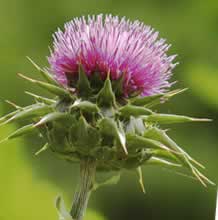 Silymarin extract still tops in liver protection
Silymarin extract still tops in liver protection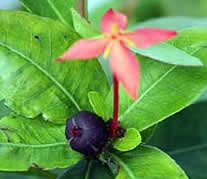 Santan Flower has wound healing properties
Santan Flower has wound healing properties 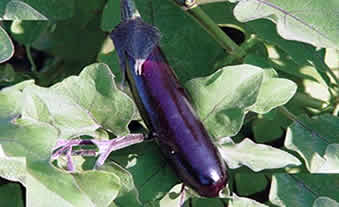 Antioxidant properties from Talong
Antioxidant properties from Talong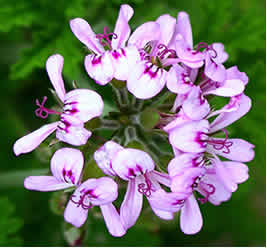 Malvarosa Plant found to have antioxidant properties
Malvarosa Plant found to have antioxidant properties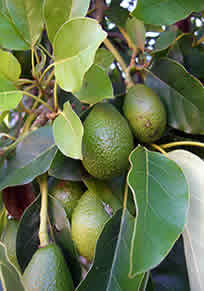 Anti-cancer properties of Avocado fruit
Anti-cancer properties of Avocado fruit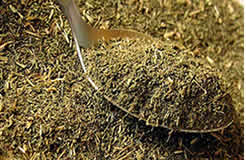 Stevia use can cause cancer, studies suggests
Stevia use can cause cancer, studies suggests